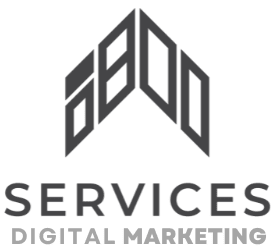Mastering the Key Steps of Web Design
An algorithm is like the brain behind search engines. It’s a set of rules and calculations that determine which websites appear when you search for something online. Think of it as a digital matchmaker trying to show you the most relevant results.
1. User Interface (UI)
- User Interface (UI) is like the design and layout of your digital storefront, determining how it looks and where elements are placed. It’s the visual aspect that users interact with, including buttons, menus, and other on-screen components.
- Need: Businesses need a well-designed UI to create a positive first impression and guide users seamlessly through their online journey. A user-friendly interface encourages exploration and contributes to higher user satisfaction.
2. User Experience (UX)
- User Experience (UX) is like the overall satisfaction of customers while navigating your digital store. It encompasses the ease of use, accessibility, and enjoyment users experience when interacting with your website.
- Need: Businesses need to prioritize UX to create a website that meets the needs and expectations of their audience. A seamless and enjoyable user experience contributes to higher engagement and better conversion rates.
3. Responsive Design
- Responsive Design is like having a digital storefront that adapts to different-sized windows, whether on a desktop, tablet, or smartphone. It ensures that your website looks and functions well on any device, providing a consistent experience.
- Need: Businesses need responsive design to reach and engage users on different devices. With the increasing use of mobile devices, having a website that adjusts seamlessly to various screen sizes is essential for broader audience reach.
4. Navigation
- Navigation is like the road map guiding visitors through your digital store. It involves the menus, links, and buttons that help users move around and find the information or products they’re looking for.
- Need: Businesses need effective navigation to provide a smooth and user-friendly experience. Well-structured menus and easy-to-follow paths contribute to a positive overall impression and encourage users to explore further.
5. Wireframe
- A wireframe is like the blueprint for your digital storefront. It’s a simplified visual representation that outlines the basic structure and layout of your website, focusing on the placement of elements without detailed design.
- Need: Businesses need wireframes to plan and communicate the layout and functionality of their website. It streamlines the design process, ensuring that the final product aligns with both business goals and user expectations.
6. Visual Hierarchy
- Visual hierarchy is like arranging items in your storefront window to guide customers’ attention. It involves prioritizing elements on a webpage to create a natural flow, directing users to focus on essential information first.
- Need: Businesses need a well-defined visual hierarchy to communicate information effectively. By guiding users through a clear path, businesses can ensure that key messages and calls-to-action receive the attention they deserve.
7. Typography
- Typography is like choosing the font and style of the text in your digital storefront. It involves selecting the typeface, font size, and formatting to enhance readability and convey the brand’s personality.
- Need: Businesses need to pay attention to typography to establish a consistent and visually pleasing brand identity. Choosing fonts that align with the brand’s personality enhances the overall aesthetic of the website.
8. Color Scheme
- A color scheme is like selecting the color palette for your storefront’s decor. It involves choosing a set of colors that harmonize and represent your brand, creating a visually appealing and cohesive look.
- Need: Businesses need a well-thought-out color scheme to create a memorable and visually pleasing online presence. The right color choices contribute to a positive user experience and strengthen brand recognition.
9. Images and Graphics
- Images and graphics are like the visual merchandising in your digital storefront. They include photos, illustrations, and other visuals that enhance the aesthetics of your website and convey information.
- Need: Businesses need compelling images and graphics to create an immersive and engaging online experience. Visual elements enhance the storytelling aspect of the website and play a key role in conveying the brand message.
10. Mobile Optimization
- Mobile optimization is like making sure your storefront is accessible and inviting, even for customers on smaller devices. It involves adapting your website to provide a seamless experience on smartphones and tablets.
- Need: Businesses need mobile optimization to cater to the growing number of users browsing on smartphones. It’s about creating a positive experience for mobile visitors, ensuring that they can easily navigate and engage with your site.
11. Accessibility
- Accessibility is like making sure your digital storefront is welcoming to everyone, regardless of abilities or disabilities. It involves designing and developing your website to be usable by people with various needs and preferences.
- Need: Businesses need to prioritize accessibility to create an inclusive and user-friendly online environment. By making their digital storefront accessible, businesses open up opportunities to connect with a diverse audience.
12. White Space
- White space is like the breathing room in your digital storefront. It’s the empty space around text, images, and other elements that allows content to breathe and creates a sense of clarity and organization.
- Need: Businesses need to embrace white space to create a visually pleasing and easy-to-navigate website. Proper use of white space allows important elements to stand out, improving user comprehension and overall satisfaction.
13. Call-to-Action (CTA) Buttons
- Call-to-action (CTA) buttons are like the inviting signs in your digital storefront that prompt visitors to take a specific action, such as “Buy Now” or “Subscribe.” They are designed to attract attention and encourage user engagement.
- Need: Businesses need effective CTA buttons to drive user actions and conversions. Clear, compelling, and strategically positioned CTAs prompt users to take the next step, contributing to the success of marketing campaigns.
14. Loading Speed
- Loading speed is like the speed at which your digital storefront opens its doors to visitors. It’s the time it takes for your website to load, influencing the first impression and overall user experience.
- Need: Businesses need to optimize loading speed to provide a seamless and efficient user experience. Faster loading times contribute to better user retention and overall satisfaction, improving the chances of successful interactions.
15. Parallax Scrolling
- Parallax scrolling is like creating a dynamic and immersive visual experience in your digital storefront. It involves background images moving at a different speed than the foreground as users scroll, adding depth and visual interest.
- Need: Businesses need to consider parallax scrolling to enhance the visual appeal of their website and captivate visitors. When used thoughtfully, parallax scrolling can contribute to a more engaging and memorable online experience.
16. Grid Layout
- Grid layout is like arranging the shelves in your digital storefront systematically. It involves organizing content into a grid, ensuring a consistent and balanced visual structure on the webpage.
- Need: Businesses need a grid layout to maintain a visually appealing and well-organized website. A structured grid ensures that content is presented in a logical manner, making it easier for users to navigate and find information.
17. CSS (Cascading Style Sheets)
- Cascading Style Sheets (CSS) are like the style guidelines for your digital storefront. They control the presentation and layout of your website, specifying how elements should look and be displayed across different devices.
- Need: Businesses need CSS to maintain a consistent and visually appealing brand presence online. It simplifies the design process and allows for efficient updates, ensuring that the website remains visually cohesive.
18. HTML (Hypertext Markup Language)
- Hypertext Markup Language (HTML) is like the language your digital storefront speaks to browsers. It’s the foundational code that structures the content on your website, determining how it is displayed on the screen.
- Need: Businesses need HTML to create a structured and accessible website. Understanding and using HTML allows for effective communication with browsers, resulting in a well-organized and visually appealing online presence.
19. Browser Compatibility
- Browser compatibility is like ensuring that your digital storefront looks good and functions correctly, regardless of the browser customers use to visit. It involves optimizing your website to work seamlessly across different browsers.
- Need: Businesses need to prioritize browser compatibility to reach and engage users using different browsers. It’s about creating a consistent experience, irrespective of the browser, to cater to a diverse audience.
20. Website Maintenance
- Website maintenance is like keeping your digital storefront in top-notch condition. It involves regular updates, bug fixes, and optimizations to ensure that your website functions smoothly, remains secure, and reflects the latest information.
- Need: Businesses need to invest in website maintenance to ensure the longevity and effectiveness of their online presence. It’s a proactive approach to address potential issues, keep content up-to-date, and provide users with a reliable and secure experience.
Transform with Digital Excellence!
As of December 2023, a report shows that 91% of businesses are actively involved in various digital initiatives, and 87% of senior business leaders consider digitalization a top priority. Additionally, 89% of companies have either already implemented a digital-first business strategy or have intentions to do so.

The problem
In this digital age, businesses often struggle to cut through the noise and capture the attention of their target audience amidst the vast online landscape.
The Solution
Harnessing the power of digital marketing, businesses can strategically reach their audience where they spend most of their time online.
